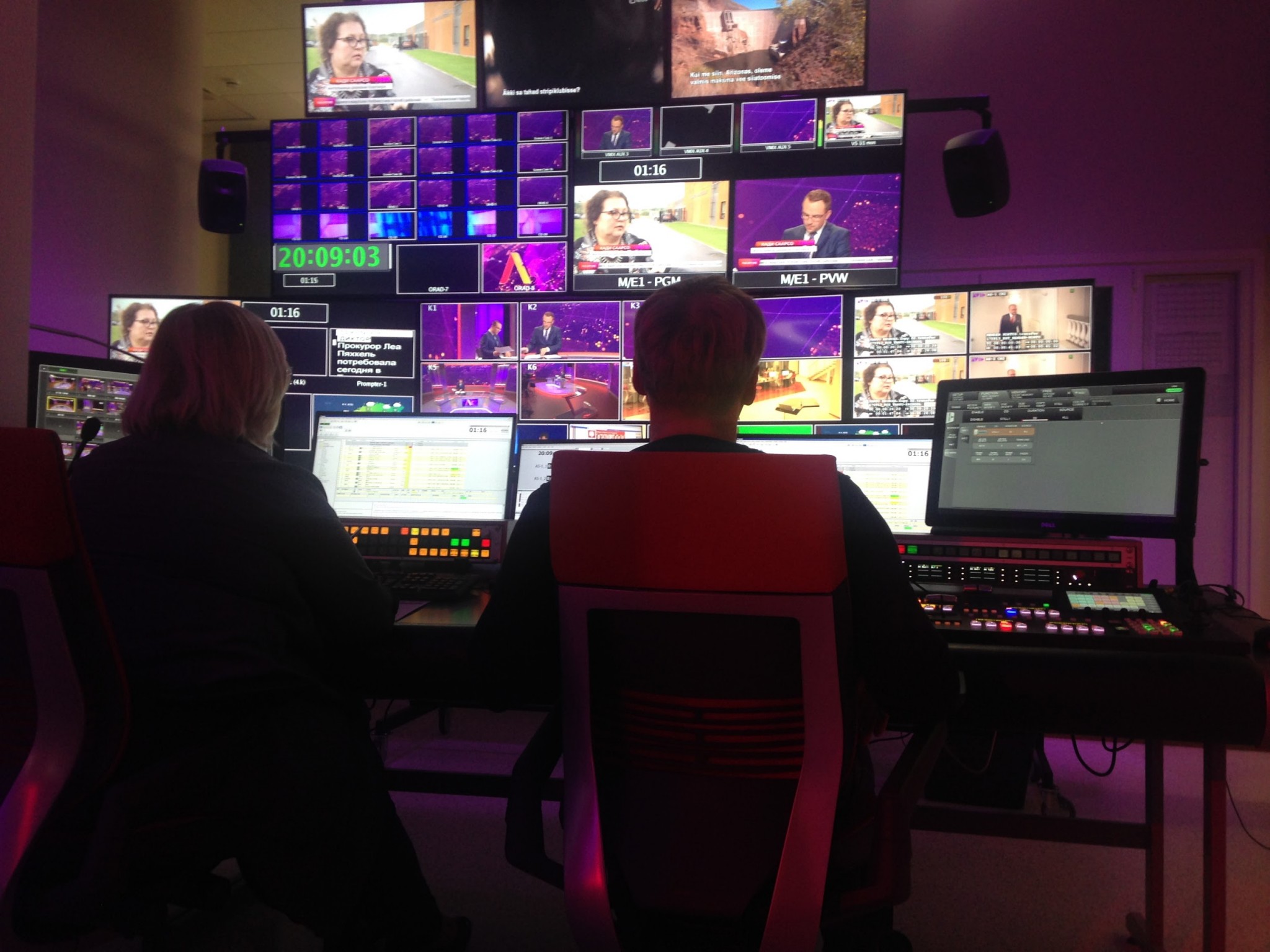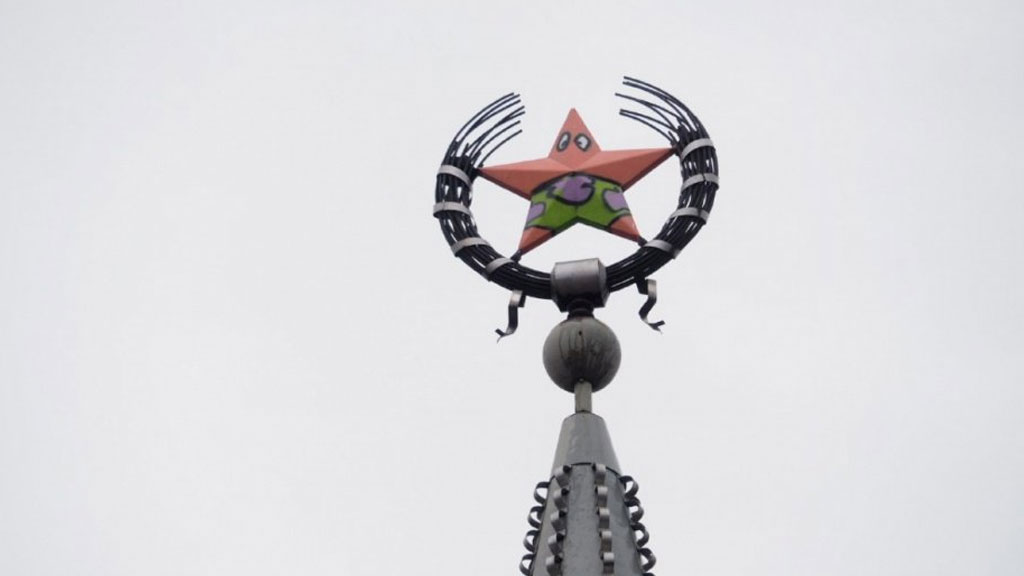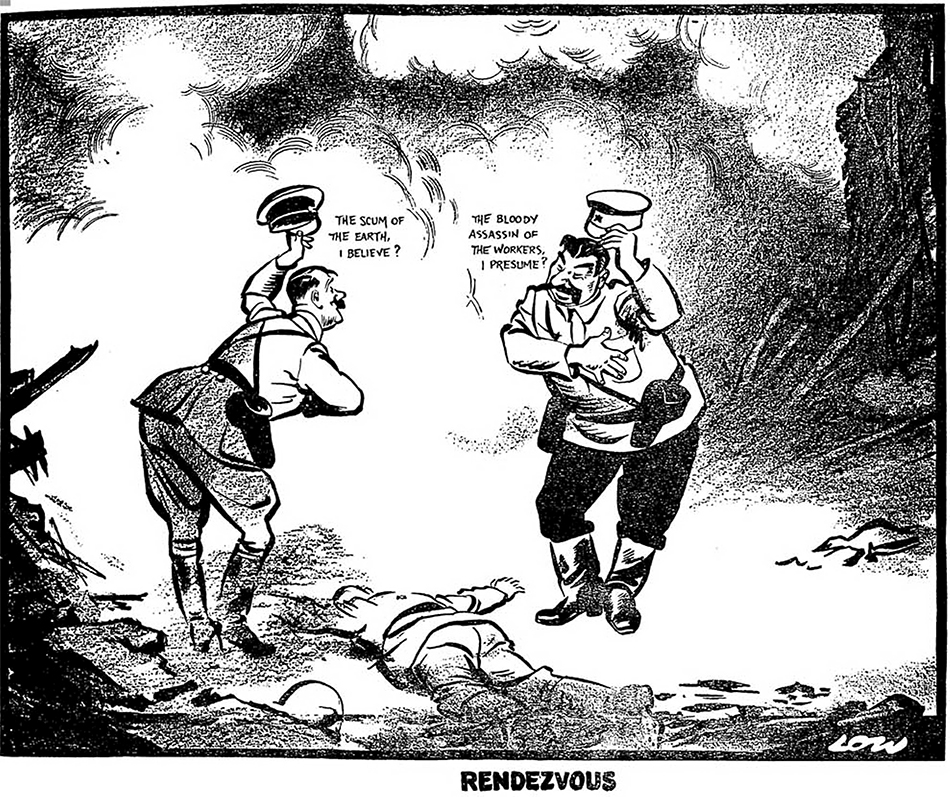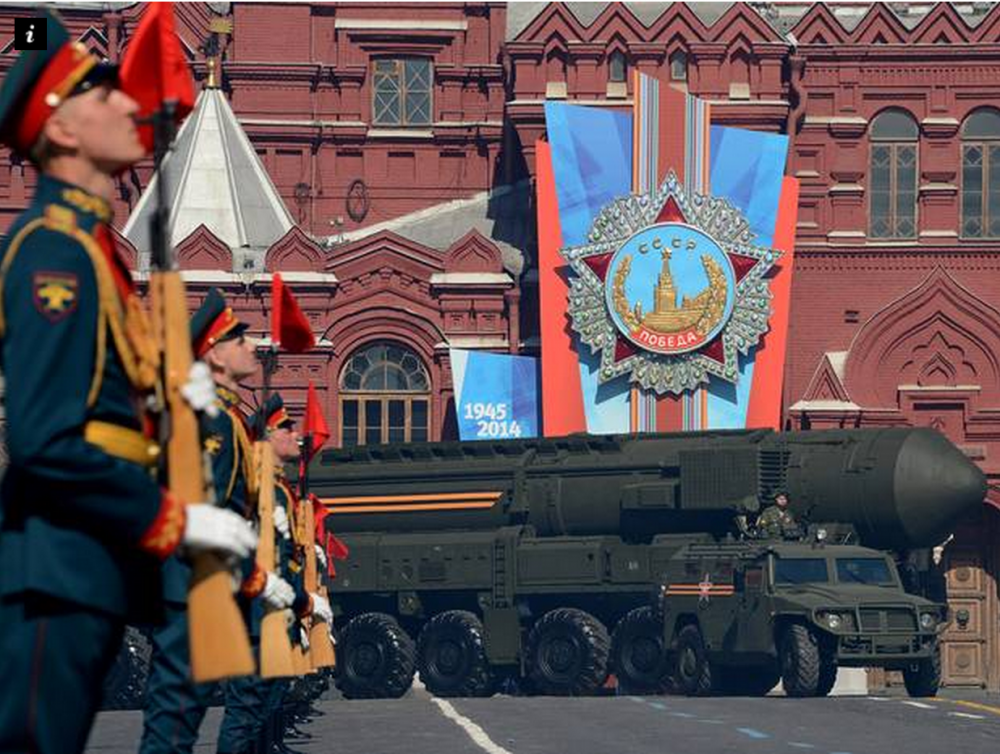There are different ways in which Russia tries to spread its influence in Estonia. As a former member of the Soviet Union, Russia’s current neighbor, and a country where 25% of the population is Russian, Estonia is attacked with different kinds of propaganda.
Euromaidan Press talked to Dmitri Teperik, Chief Executive of International Center for Defense and Security in Estonia, to find out what kinds of approaches the Russian Federation practices in the Baltic state, how deep Estonia’s dependence on Russia is, and what Ukraine can learn from Estonia’s experience. Teperik often comes to Ukraine, in particular its eastern part, so he is also familiar with the situation in the country.
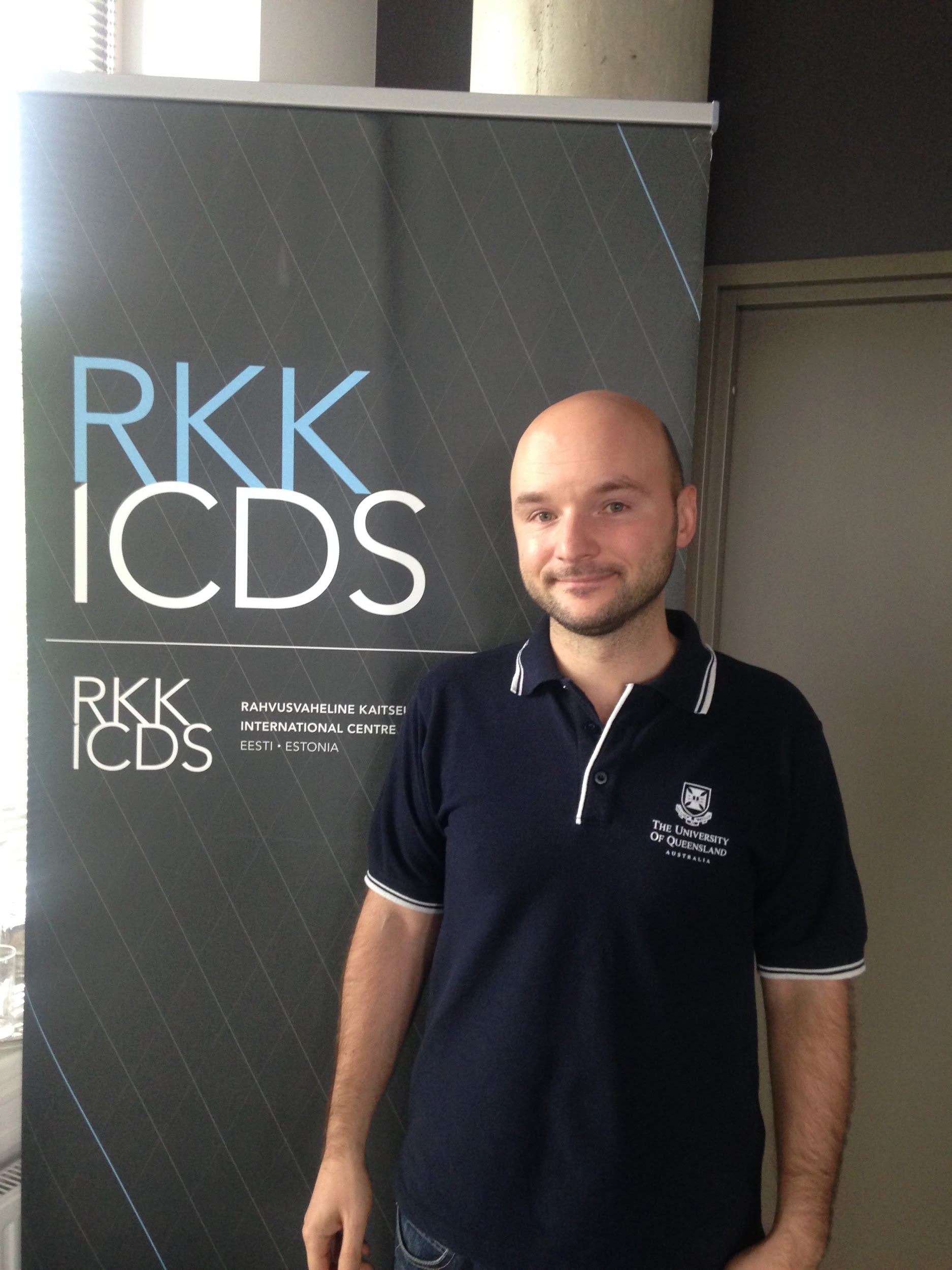
The International Center for Defense and Security was founded in 2006. 80% of its funds come from the state. However, Teperik highlights that the government does not interfere in their work. The main task of the center is to look for weak points in the current legislation and other fields which need development. Its geographic scope goes beyond Estonia and includes northern Europe, Baltic states, transatlantic relationships with the US and NATO, European policy on defense and security, and also the situation in allied countries such as Ukraine and Georgia. The activities include researching, organizing different kinds of conferences and courses, raising awareness of the population on security, defense and internal policy.
Who are the Russians in Estonia
Lately, one of Estonia’s main threats comes from the direction of its neighbor Russia. Teperik clarifies that Russian-speaking Estonians as himself are not Russophobes:
“It is the opposite. We are for good relationships with a democratic, rich, and strong Russia. But we are very careful towards constantly growing aggression.”
According to the expert, Russia uses several topics for its manipulations in Estonia. Using the country’s unsolved internal problems is the main one. So where exactly is this threat hiding?
“If we put aside the historical factor and attempts to rewrite our history, the other narratives concern Estonia’s Russian-speaking population,” says the expert.
- According to him, there are about 85,000 citizens of Russian Federation who are permanent residents of Estonia’
- About 83,000 of Russian-speaking Estonians are people with uncertain citizenship. They are those who in the beginning of 90s did choose any certain citizenship. Teperik describes the majority of them as those who feel that they are offended by their destiny and the state. They sympathize with Russia and Putin’s regime. And this is used in propaganda;
- And the third part are Russian-speaking citizens of Estonia. “They build their life in Estonia based on human rights, freedom of movement of capital and realize themselves in a free European country,” describes Teperik.
Politicians resort to manipulating the topics of ethnicity and language during each election. Teperik notes that such a division is artificial, as now people in Estonia are more divided by their socioeconomic status. And the latter division line is not left without attention by Russia either, says the expert:
“This topic isn’t political unless we make it political. As soon as we do this, Russia uses it immediately and accuses Estonia and other Baltic countries of oppressing the Russian-speaking population. It does it in the OSCE, UN, and other formats.”
Russian influence and dependence on Russia

Physical dependence. Estonia is somewhat physically dependent on Russia:
- Its liquified gas is supplied mainly by Russia. However, alternative supply paths do exist.
- Its power networks are left from the Soviet times and are synchronized with the Russian Federation. But the good news is that Estonia does not buy electricity from Russia. It produces it by itself and buys from the Nordic Countries’ stock.
- Its railway connection with Europe is almost absent – also a consequence of Soviet time, when the routes from Tallinn to Saint-Petersburg and Moscow were prioritized. Now the country is working on constructing the Rail Baltic – a modern track running from Helsinki to Warsaw, and from Warsaw to continental Europe.
Diversified messaging. Russia tries to influence Estonians depending on the group they belong to.
Teperik explains that ethnic Estonians felt that they are a part of the west even during the period of Soviet occupation. But the Russophones are heterogenous – they came from different parts of the Soviet Union, including Ukraine. Part of them integrated well – they learned the Estonian language, received Estonian citizenship, share its values and feel that they are a part of this society. However, a part of them remained in the Soviet cognitive space which is cultivated now by Russia. Their socioeconomic status is declining, as they either haven’t learnt Estonian or don’t use it for some reason. They maintain a connection with Russia – have business there, keep in touch with relatives, and watch Russian channels.
“In peaceful times, it wouldn’t be bad. But we do not live in peaceful times,” says Teperik.
According to him, Russia’s hostile manipulations and information-psychological influence fis getting more complex.
There are three components to these manipulations.
The first one is directed towards older populations. It foresees boosting nostalgia for Soviet times. It is done through entertaining TV programs – TV-series, films, pseudo-scientific programs, popular science documentaries. They rehabilitate the image of Stalin.
“Drawing parallels with today’s world, they say how important it is now to have a strong leader. And they see Putin as one,” explains the expert and goes on saying that such TV programs also show how important it is to build a power vertical based on power structures (police, security services, army etc):”People in uniforms are constantly present on Russian TV.”
The second component is directed towards people aged 35-50 years. This is the generation that came to age after the fall of the Soviet Union. “This group should have realized themselves in the 90s. However, due to the collapse of the Soviet system, a lot of working potential was lost. Even for people who achieved something in life, it wasn’t easy. And they are not the economic establishment in Estonia now,” describes the expert. So the propaganda towards these people appeal to the feeling of remorse:
“They tell them ‘you could have gotren more,’ so, at any opportunity, they are persuaded to take revenge.”
The third component is related to the youth. Russian propaganda works with them through the Internet and social media.
“We conducted monitoring and saw that in social media, especially Russian VKontakte, where there is a lot of free music and other attractions for the youth, a lot of negative information is spread about our countries and the west in general. Also, a lot of information is praising so-called traditional values, Russia and its leaders,” summarized the expert and added that the work with youth has to be a priority for Estonia: “They are citizens of our country, the EU, a free and democratic society. So in no case we can give them up.”
During the 2017 local elections in the country, citizens as young as 16 were allowed to vote and to be elected.
Ukrainian allusions

The situation in Estonia is similar to the Ukrainian one. However, different experts emphasize that is very unlikely that the Crimean or Donbas scenario could be repeated in Estonia. They name a better level of life in the country as the main reason for that. Teperik adds that Russian propaganda images about Ukraine sometimes even work for the better in Estonia:
“People here saw the images of killings, destroyed life, and infrastructure. Even misinterpreting the geopolitical situation which stands behind it, they do realize the consequences. Even if someone, let’s say, loves Putin and goes out every 9th of May with Soviet flags, he is not ready to cross the red line. When they see an image from Ukraine, they realize that they do not want to have the same here. They can sit at home and complain about the Estonian government, however they value their financial state here and are not ready to risk it.”
Unlike Ukraine, Estonia didn’t ban Russian TV channels or Russian Internet services. Still, Teperik justifies the Ukrainian policy:
“If it happened in peaceful times, of course, it would be possible to condemn this. But we do not live in peaceful times. And we are not talking only about traditional war. In Ukraine, there are tanks and there is an undeclared real war. Talking about my country, we do not have tanks, but the war has been ongoing for a long time cognitive informational-psychological space. So here, or in Ukraine, any prohibition is directed towards keeping our values.”
The expert notes that, talking about bans in Ukraine, many focus only on TV channels and social media:
“Because of this hype, people forget to mention that there are other services, for example, Yandex maps, payment services etc which have been forbidden. As we know, Yandex services had been providing information to Russian security services. It is not a question of social media, it is a question of personal data, starting from a credit card, ending with addresses. If this is all put together, it will be a huge database. This means that Ukrainians had been voluntarily handing over a lot of data to the aggressor country, paying with their own money.”
The expert is confident that the ban of Russian content and services would be more effective in Ukraine if there was an alternative to them. In Estonia, State Public Broadcasting was tasked with presenting an alternative. It is funded from the state’s budget, but is independent and controlled by the people of Estonia.
Read also: How Estonian Public Broadcasting creates an alternative to Russian propaganda
Teperik understands all the complexity of creating such an alternative for Ukraine, where the media field is divided between local political and oligarchic forces and sees the future in the initiatives coming from civil society.
The International Center for Defense and Security in Estonia tries to keep Ukraine high on their agenda. Recently, the center organized an event attended by 10,000 people, where the topic of how Estonia can help Ukraine’s reforms was also discussed. Teperik says that during the event they tried to stray from the topic of war:
“Ukraine is associated with war especially in central Europe. This is bad for the investment climate. Ukraine as a big and rich country has a lot of things to offer to Europe. Not only the culture of Ukraine should be promoted – traditional costumes, songs etc; there is a new European civil Ukraine with modern business.”
The expert is confident that the Ukrainian agenda should be formed within a positive context. At the same time, he warns that there a lot of misinformation directed against Ukraine is spread in the west and gives an example of one of the latest ones. The information appeared that trade between Russia and Ukraine had been significantly raised:
“And of course many people in Estonia started asking: ‘why do we introduce sanctions against Russia to support Ukraine but Ukraine still trades with Russia?’ It was misinformation which should have been urgently explained. That from the point of view of technologies and Soviet infrastructure there are still strong connections between the two countries. They cannot be broken because whole industrial cities will fall. There is trade not because Ukraine likes it, but because the remains can’t be reoriented towards the west. Maybe they can’t be reoriented because the west does not need this production But you can’t just fire 10,000 people from an enterprise. These things should be explained beforehand.”
Teperik is confident that Ukraine, Estonia and other European countries can become stronger by creating a common experience:
“It will make us much stronger and richer. And this is not because we should resist Russian aggression, but because it is interesting for us.”


